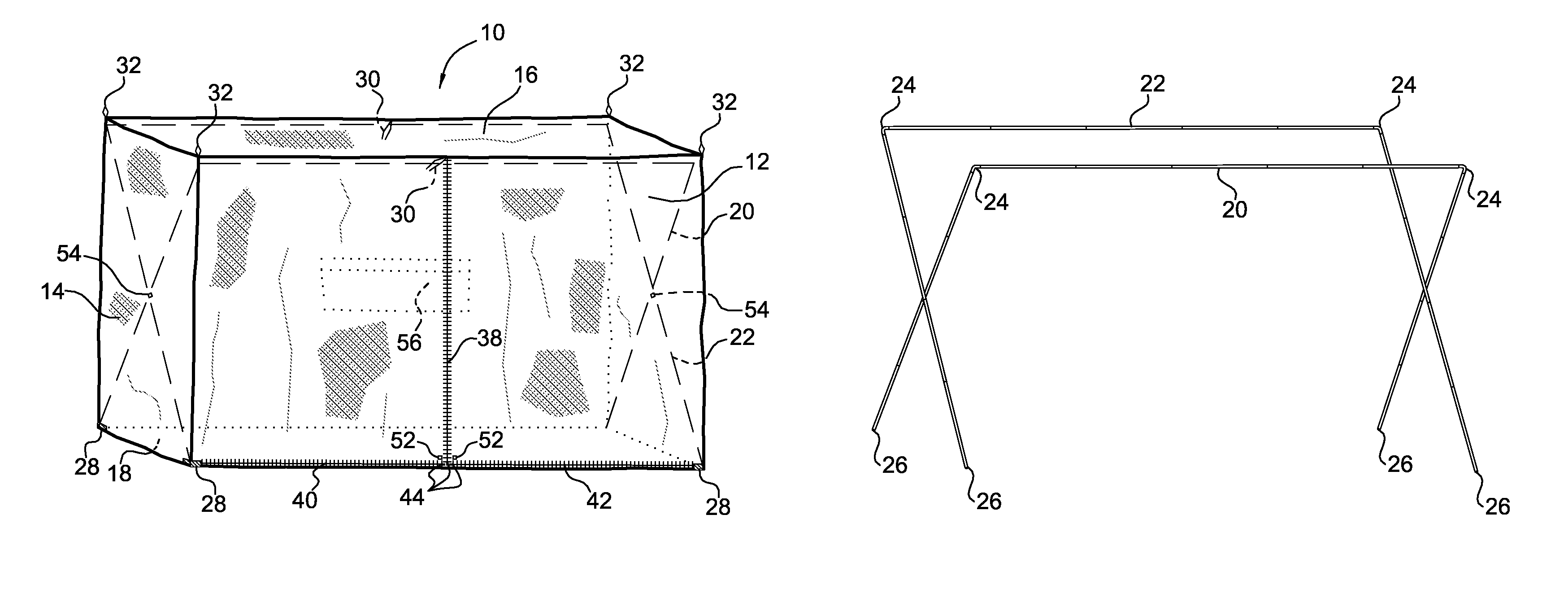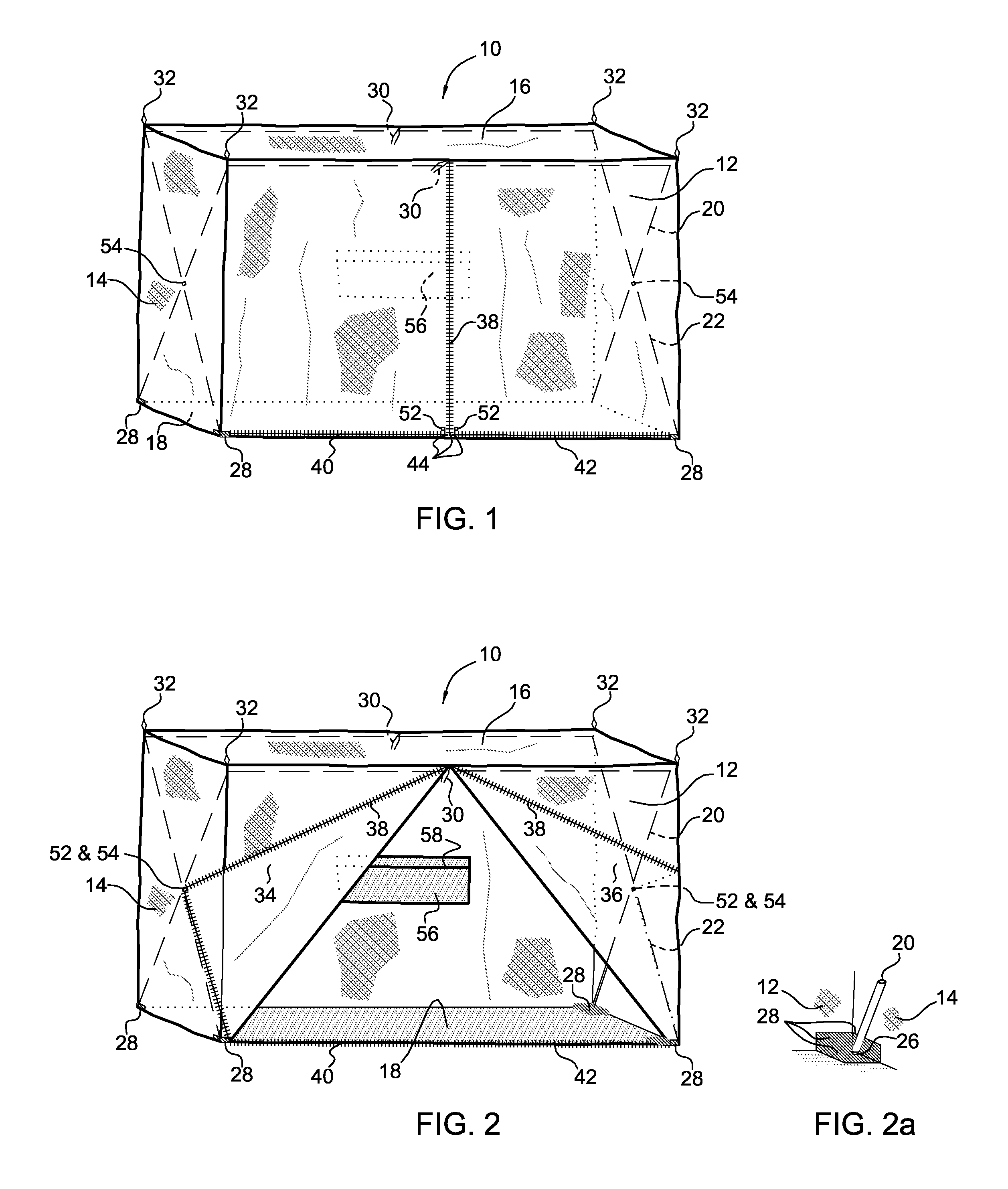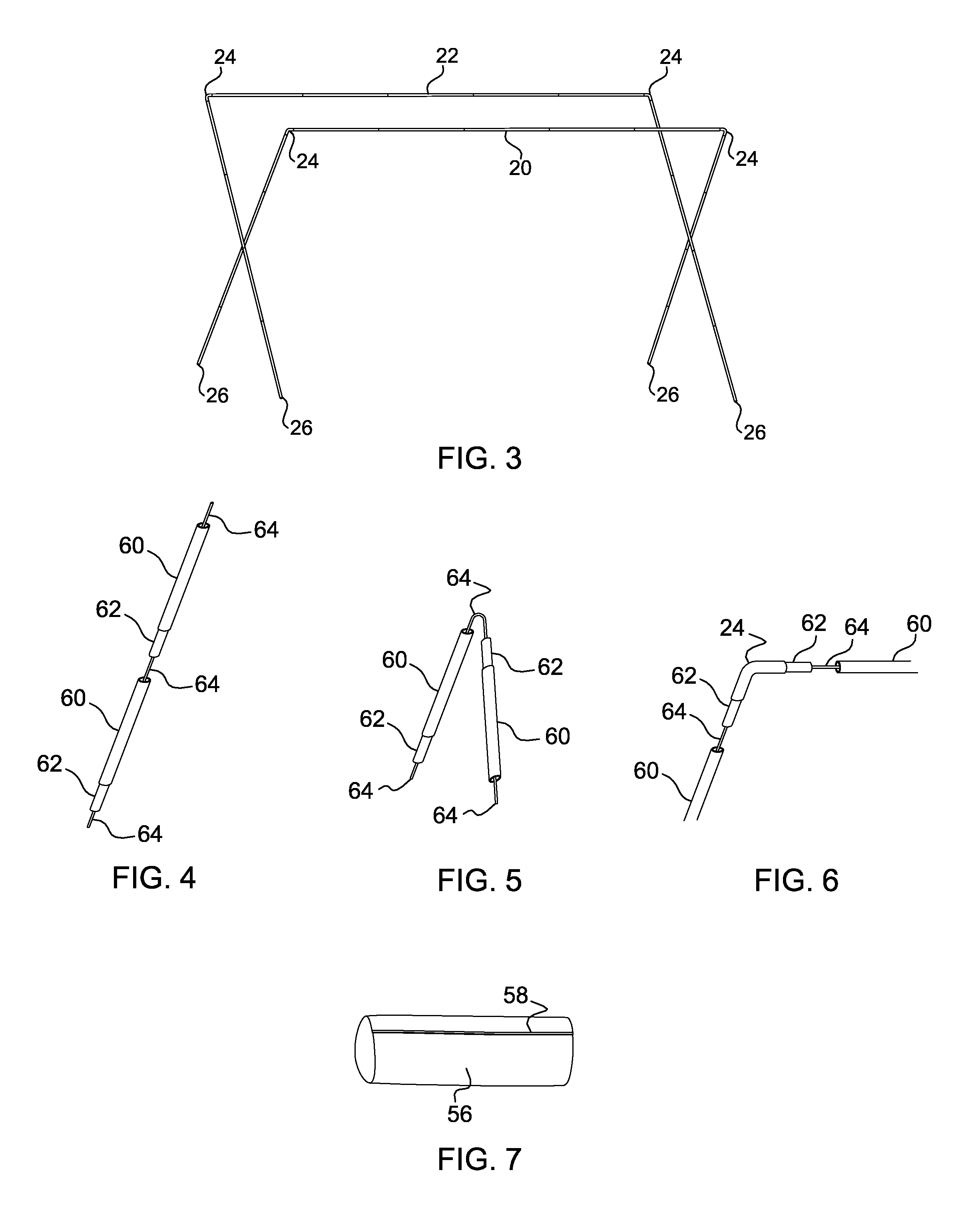Self-supporting, high-profile, insect net enclosure
a self-supporting, insect-net technology, applied in the direction of tents/canopies, building types, constructions, etc., can solve the problems of not having a floor to be fully enclosed, difficult to access, and unsuitable for longer-term use by less mobile occupants
- Summary
- Abstract
- Description
- Claims
- Application Information
AI Technical Summary
Benefits of technology
Problems solved by technology
Method used
Image
Examples
Embodiment Construction
FIG. 1 illustrates the fully closed configuration of the self-supporting net enclosure 10 designed to accommodate a single person with enough headroom to sit-up inside on top of a military style cot, is lightweight and easily transportable making it ideal for military applications, disaster relief, humanitarian needs, as well as for recreational use.
The net enclosure 10 being impregnated with a long-lasting insecticide includes a flexible no-see-um netting fabric covering having two side walls 12, two end walls 14, and a ceiling 16; a flexible ripstop nylon taffeta floor 18, and is a self-supporting structure in that it does not require suspension lines to hold its shape or to maintain stability.
More specifically, the opposing side walls 12, opposing end walls 14, the ceiling 16 and the floor 18, hold their shape as they are pushed-out by two resiliently flexible, segmented poles 20 and 22, that have two angles each 24, held in a flexed condition by the proportions of the side walls...
PUM
 Login to View More
Login to View More Abstract
Description
Claims
Application Information
 Login to View More
Login to View More - R&D
- Intellectual Property
- Life Sciences
- Materials
- Tech Scout
- Unparalleled Data Quality
- Higher Quality Content
- 60% Fewer Hallucinations
Browse by: Latest US Patents, China's latest patents, Technical Efficacy Thesaurus, Application Domain, Technology Topic, Popular Technical Reports.
© 2025 PatSnap. All rights reserved.Legal|Privacy policy|Modern Slavery Act Transparency Statement|Sitemap|About US| Contact US: help@patsnap.com



